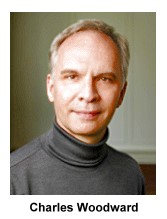
Reviews Path of Miracles, Virginia Chorale Some concerts stay with you long after the final note has died away. This was the case with the Virginia Chorale’s presentation of Joby Talbot’s extraordinary Path of Miracles on February 15th at Sacred Heart Church in Norfolk.
Roncesvalles, the first movement of Path of Miracles, began with three men singing at center; more singers came in from the sides, adding their voices in a long, low growl that rose and rose eerily in an aboriginal Taiwanese singing technique before flowering into overlapping lines of texts in seven languages, recounting Herod’s murder of Saint James (in Spanish, Santiago). English verses by the librettist/poet Robert Dickinson evoked the variety of pilgrims converging on a common destination. Talbot’s music had unusual harmonies, brilliantly punctuated by the crotales (antique cymbals) of Virginia Symphony principal percussionist Rob Cross—the only non-vocal music. In the second movement, Burgos, the pilgrims grumble about the harshness of the pilgrimage—“Innkeepers cheat us, the English steal, the devil waits at the side of the road”—and recall the miracles that occurred along the way. It was mesmerizing, with superb dynamics and floating dissonances shimmering in the air. The third movement, Leon, showed the pilgrims’ exhaustion. The sun beats down, “over river and sheep track, by hospice and hermit’s cave.” This was a work for 17 soloists remember, but among these remarkable singers, four in particular stood out: Andrew Potter’s lithe, powerful bass voice had both authority and beauty. Sarah Frook’s clear soprano, Lynn Kotrady’s rich alto and Scott Crissman’s bright tenor were simply splendid.
The performance was an absolute triumph for conductor Charles Woodward, who had prepared the selected singers so superbly, bringing out every nuance of the music and the text. Few choruses could even dream of doing Path of Miracles, nor to present it with such awe-inspiring dramatic effect. I wondered at first why a chorus would need a stage director, but Jeffrey Gallo’s staging moved the members of the Virginia Chorale around, seamlessly, into shifting groups that enhanced the music—all in the exquisite acoustics of Sacred Heart. This review was originally broadcast on WHRO 90.3 FM’s “From the other side of the Footlights.” Review Index
|
 Its British composer has excelled in a dizzying array of musical genres, from television theme music to ballet, film, advertising, orchestral and—not least—a cappella choral works. Commissioned by the British a cappella choir Tenebrae, Path of Miracles is based on the centuries-old pilgrimage to Spain’s Santiago de Compostela, evoking the four main staging points of its month-long route across Northern Spain. It’s written for 17 soloists—an unusual number. Each singer, at any given time, may be singing alone, or holding a different line in the midst of 16 other different lines, or being part of a smaller group. This is not a work for the faint of heart.
Its British composer has excelled in a dizzying array of musical genres, from television theme music to ballet, film, advertising, orchestral and—not least—a cappella choral works. Commissioned by the British a cappella choir Tenebrae, Path of Miracles is based on the centuries-old pilgrimage to Spain’s Santiago de Compostela, evoking the four main staging points of its month-long route across Northern Spain. It’s written for 17 soloists—an unusual number. Each singer, at any given time, may be singing alone, or holding a different line in the midst of 16 other different lines, or being part of a smaller group. This is not a work for the faint of heart. In the final movement, Santiago, the pilgrims come closer to their destination, with music in running triplets like waves running on the shore. Texts from Carmina Burana and the Codex Calixtinus are expressed in jubilant, eccentric rhythms. The pilgrims continue on to Finisterre—the end of the world—singing, “We have walked out of the lives we had/ And will return to nothing, if we live, / Changed by the journey, face and soul alike.” Still singing, the chorus processed to the back of the hushed church, their voices passing by on either side of the audience, through the open door to the vestibule . . . and the door closed . . . and the voices died away.
In the final movement, Santiago, the pilgrims come closer to their destination, with music in running triplets like waves running on the shore. Texts from Carmina Burana and the Codex Calixtinus are expressed in jubilant, eccentric rhythms. The pilgrims continue on to Finisterre—the end of the world—singing, “We have walked out of the lives we had/ And will return to nothing, if we live, / Changed by the journey, face and soul alike.” Still singing, the chorus processed to the back of the hushed church, their voices passing by on either side of the audience, through the open door to the vestibule . . . and the door closed . . . and the voices died away.